I was recently craving fresh pasta for dinner, but my oldest son has developed a problem with digesting eggs. I did some research and found a number of eggless pasta dough recipes that I liked parts of, but not all of. So I began to experiment, and I came up with an easy to work with dough that rolls out a really nice pasta.
Smoked Paprika Pasta Dough
1 cup of Italian “00” flour
½ cup of semolina dough
a scant ¾ cup of tepid water
1 teaspoon of salt
1 teaspoon of smoked paprika
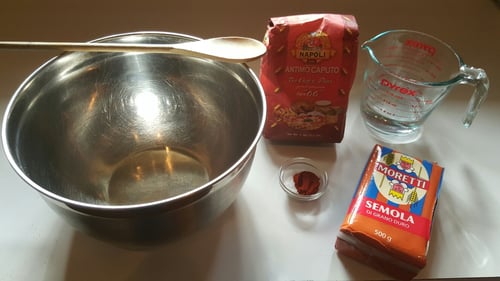
Whisk together all of the dry ingredients together in a bowl.
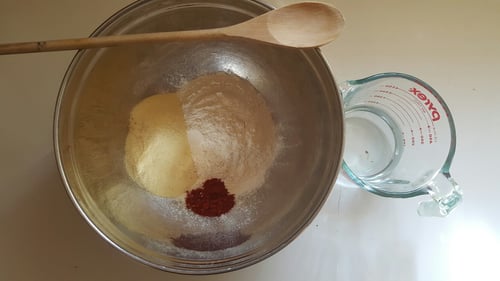
Make a well in the center and add a little over a half a cup of the water. Combine the dry into the wet adding water as needed until the dough will come together into a ball. This dough should have only a slight hint of dampness and should be easy to knead.
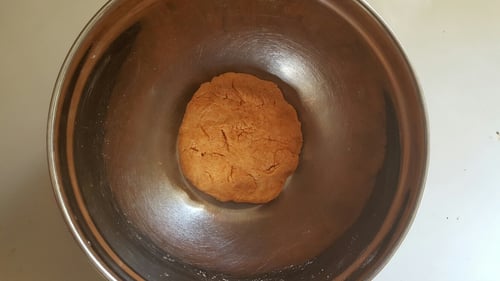
Chef’s note: When you see a recipe with “scant” it means that you will probably need less than the amount, in this case ¾ cup. Often when working with doughs, humidity can play a part in how much moisture it will accept.
Dust your work surface with a little “00” and semolina flour and begin to knead the dough. When you are kneading a dough you are using the palms of your hands and rolling it forward. This allows the gluten molecules in the flours to stretch and lengthen. When you begin the kneading process the dough should be bumpy looking. After vigorously kneading the dough for about 4 minutes it should be smooth and have a softer feel to the dough. It is important to remember that less is more in the addition of flour to the kneading process. Add just enough of the flours to keep the dough from sticking to your work surface. When you have finished kneading, cover it in plastic and allow the dough to rest for 20 minutes.
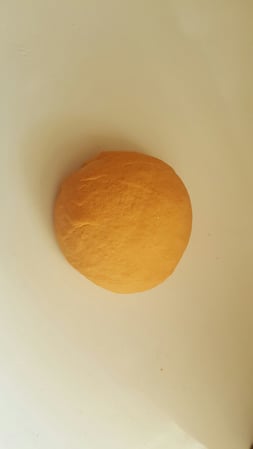
To begin rolling out your dough, lightly dust your pasta machine with the flours and set the number on the side to its lowest setting, 0 or 1.
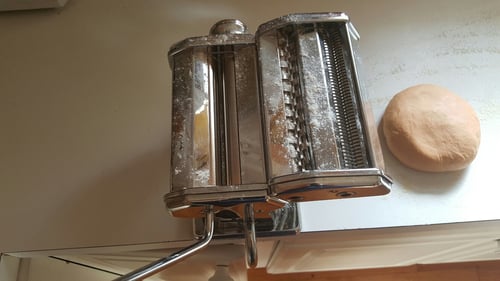
Chef’s note:some pasta machines have settings from 1 - 7 and others go from 0 – 9.
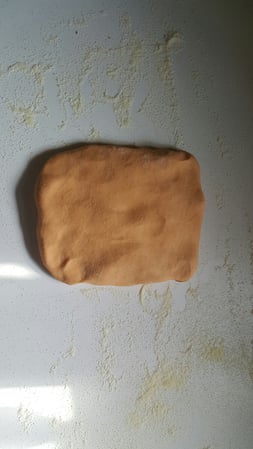
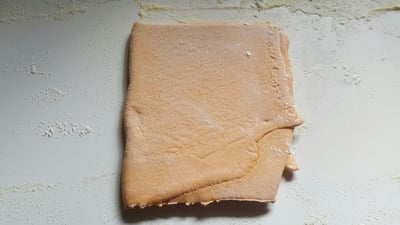
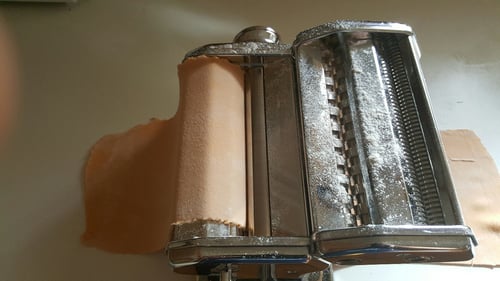
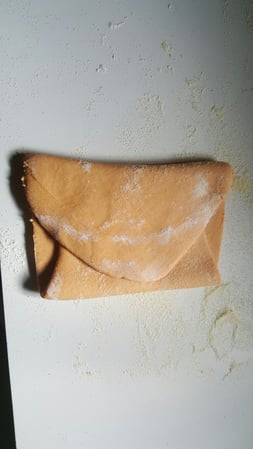
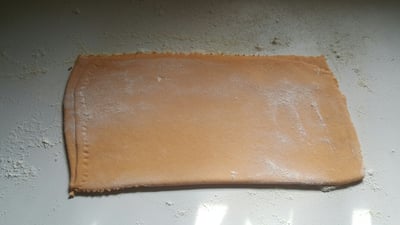
Divide this recipe of pasta dough in half and keep the other half covered in plastic until you are ready to work with it. Using your hands, form the dough into a rectangle-like shape with one end being thinner than the other. Start that thinner end in your pasta machine and run it through. Fold the dough into either thirds or halves, this depends on the length of the dough as it runs through the machine. On the first setting repeat this process a total of three times. Move the pasta machine setting to the next setting and repeat the same process a total of three times. Move the pasta machine to the next or third setting and run it through twice. At this point, you should have been folding the dough in a way that reflects the widest section of the pasta machine. At any point as you are running the pasta through the machine and it begins to feel tacky, dust the pasta with the combined flours. This will keep it from sticking in your machine and give you a smoother final product. Once again, less is more.
1st setting: three runs with folds through the machine
2nd setting: three runs with folds through the machine
3rd setting: two runs with folds through the machine
All other settings: 1 run with “no” folds through the machine
Chef’s note: The reason for running the pasta through multiple times on the first three settings is that it continues the kneading process and prepares the dough so that at the end it is smooth and ready to be cut after the second resting period. If at any point of the process, the dough begins to look rugged and not smooth, it is not ruined. Add a little flour and refold the dough and go back at least one setting and run the pasta through until it begins to look smooth and then continue on.
After the first three settings, you will finish running the dough through all additional settings once finishing on the fifth setting. For my purposes, I am going to cut the pasta dough into fettucine noodles. In this case, I lightly dust the sheets of pasta with semolina and lay on a lined sheet tray to begin to dry slightly. This usually takes around 15-20 minutes.
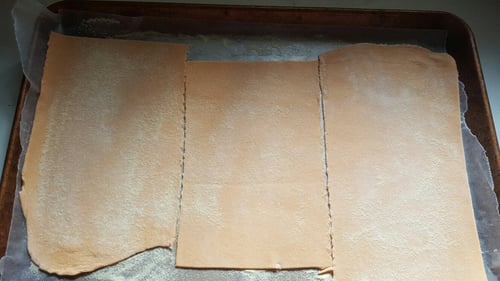
When you are ready to cut your noodles, lightly dust the sheets of pasta with semolina and run through the fettucine cutter part of your pasta machine.
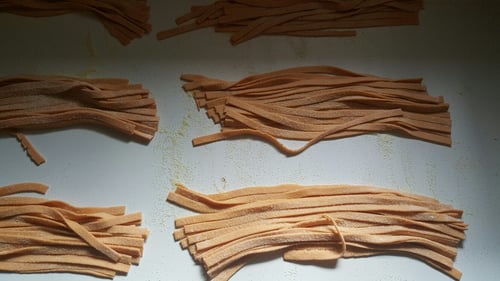
As it comes out, lightly dust the pasta with semolina and gently twirl the dough around two fingers to make a nest.
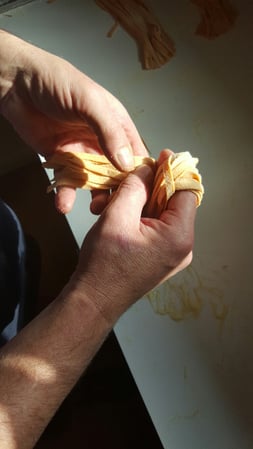
After you have cut all of your pasta and have them formed into nests, lightly sprinkle a little more semolina on the pasta. If you are ready to cook your pasta, place the pasta into salted boiling water and cook for 2-3 minutes. Drain and toss with your favorite sauce.
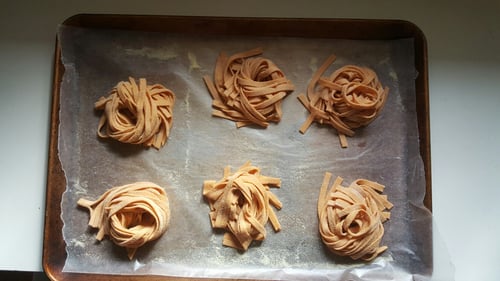
You can also place the nests into a freezer and after a couple of hours you can remove the nests and place them in a freezer-proof sealable bag and keep it in the freezer until you are ready to use. Cook the frozen pasta the same way as you would the fresh, but you will need to recover the heat of the water.
Want more hands-on pasta know-how? Sign up for a Pasta Workshop coming up in December at The Chopping Block:
We even have a Pasta Boot Camp coming up in February. Learn more about this pasta intensive class.












